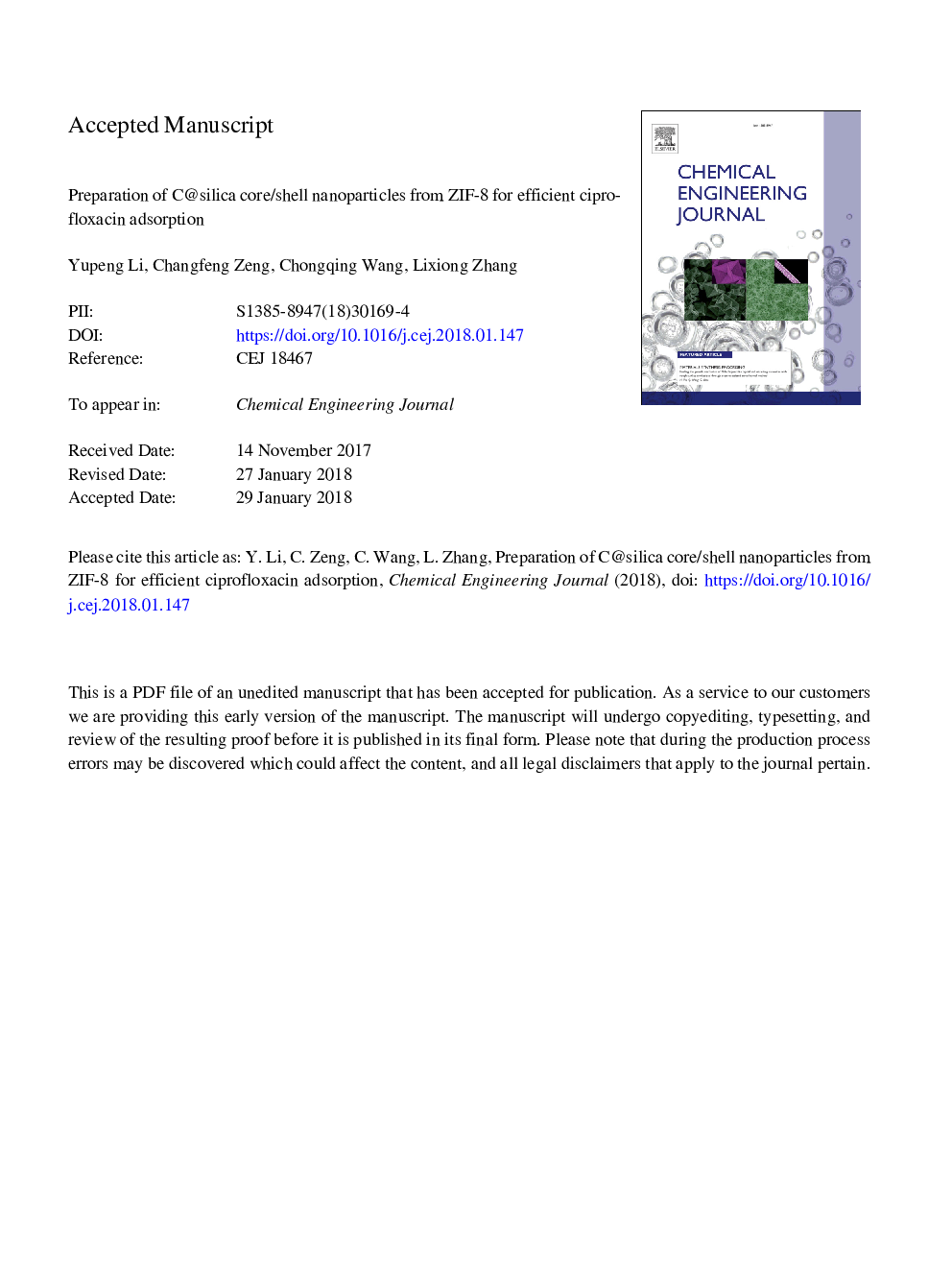| Article ID | Journal | Published Year | Pages | File Type |
|---|---|---|---|---|
| 6579768 | Chemical Engineering Journal | 2018 | 22 Pages |
Abstract
Ciprofloxacin (CIP) in water is harmful to fish, human body and potentially harmful to ecological system, thus it needs to be removed. Adsorption is a simple treatment method, but the reported adsorbents rarely showed high adsorption performance. Herein, we present the preparation of a C@silica core/shell nanoparticles material for removal of CIP from aqueous solution. The nanoparticles were prepared by first coating a layer of silica gel on ZIF-8 nanoparticles via hydrolysis of tetraethoxysilane (TEOS), followed by carbonization. XRD, FT-IR, TEM, and N2 adsorption-desorption analysis were employed to examine the obtained products. TEM images clearly show the core/shell structures with a thickness of the silica layer of 13-28â¯nm. N2 adsorption-desorption results exhibit the textural properties of the products with both micro- and meso-pores and a high surface area of 594.4â¯m2/g. More CIP amount can be adsorbed from water with higher surface area. The equilibrium adsorption amount reaches a climax at pH 6. The maximum CIP adsorption amount of the C@silica core/shell nanoparticles is 516.8â¯mg/g, much higher than the parental carbon. In addition, the maximum CIP adsorption amount is significantly increased to 1575â¯mg/g with the presence of Cu(II) in the aqueous solution. We investigated the mechanism for the increased adsorption capacity of the C@silica core/shell nanoparticles materials, indicating that the silica coating makes these nanoparticles more negatively charged and thus benefits the adsorption of CIP via stronger electrostatic interaction. The C@silica nanoparticles can be easily prepared and their CIP adsorption capacity is very high. The results show that the C@silica nanoparticles are promising candidates for removal of CIP from water.
Related Topics
Physical Sciences and Engineering
Chemical Engineering
Chemical Engineering (General)
Authors
Yupeng Li, Changfeng Zeng, Chongqing Wang, Lixiong Zhang,
